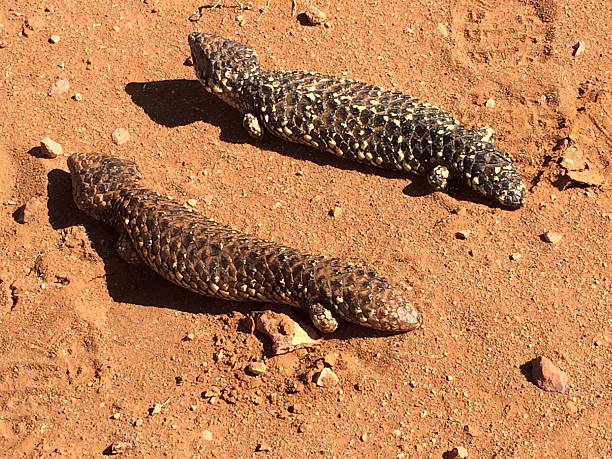Shingleback lizards, scientifically known as Tiliqua rugosa, are remarkable reptiles native to the vast and arid landscapes of Australia. These slow-moving creatures are known for their distinctive appearance and fascinating adaptations that enable them to thrive in some of the harshest environments.
Physical Characteristics: Shinglebacks are easily recognizable by their unique appearance. Sporting a robust body, short legs, and a broad, flattened tail, they resemble a miniature armored tank. Their scales, resembling rough shingles, contribute to their name and provide a layer of protection against predators.
Habitat and Range: These lizards are predominantly found in the arid regions of Australia, including deserts, scrublands, and open woodlands. Their adaptability allows them to navigate through a range of habitats, from dunes to rocky terrains.
Survival Tricks: Shingleback lizards have evolved several remarkable survival strategies. One of their most notable features is their long lifespan, with some individuals living up to 20 years. Their slow movements and tough, armored scales act as natural deterrents against predators. Unlike many other lizard species, shinglebacks don't rely on speed to escape danger; instead, they use their sturdy build as a defense mechanism.
Reproduction and Social Behavior: Shinglebacks exhibit monogamous behavior, often forming long-term pairs. Their courtship rituals involve elaborate movements and tongue-flicking displays. Interestingly, these lizards have a low reproductive rate, with females producing only one or two offspring per year. This unique reproductive strategy aligns with their survival in resource-scarce environments.
Diet and Feeding Habits: These lizards are omnivores, consuming a varied diet of vegetation, fruits, insects, and small vertebrates. Their adaptable diet contributes to their ability to thrive in different ecosystems. Shinglebacks are known to be efficient foragers, using their keen sense of smell to locate food sources.
Interaction with Humans: Shingleback lizards are generally docile and non-aggressive towards humans. Their slow movements and calm demeanor make them a fascinating subject for wildlife enthusiasts. However, it's essential to respect their natural habitat and observe them from a distance to avoid causing unnecessary stress.
Conservation Status: Despite their adaptability, shingleback lizards face threats from habitat loss due to human activities. Conservation efforts focus on preserving their natural habitats and raising awareness about the importance of these unique reptiles in maintaining ecological balance.
Fun Facts:
- Shinglebacks are also known as "stumpy-tailed lizards" due to their short, thick tails.
- They are excellent burrowers, using their strong limbs to excavate and create shelter.
- These lizards have a remarkable ability to distinguish between familiar and unfamiliar individuals, displaying a form of social recognition.
- Shinglebacks have a slow metabolism, allowing them to survive on minimal food for extended periods.
Shingleback lizards stand out as remarkable inhabitants of the Australian outback. Their sturdy build, unique adaptations, and intriguing behaviors make them a vital part of the diverse ecosystem. As we marvel at these resilient creatures, it's crucial to appreciate their role in maintaining the delicate balance of nature.
